Easy Ways To Repurpose Household Items To Create A Homely Garden
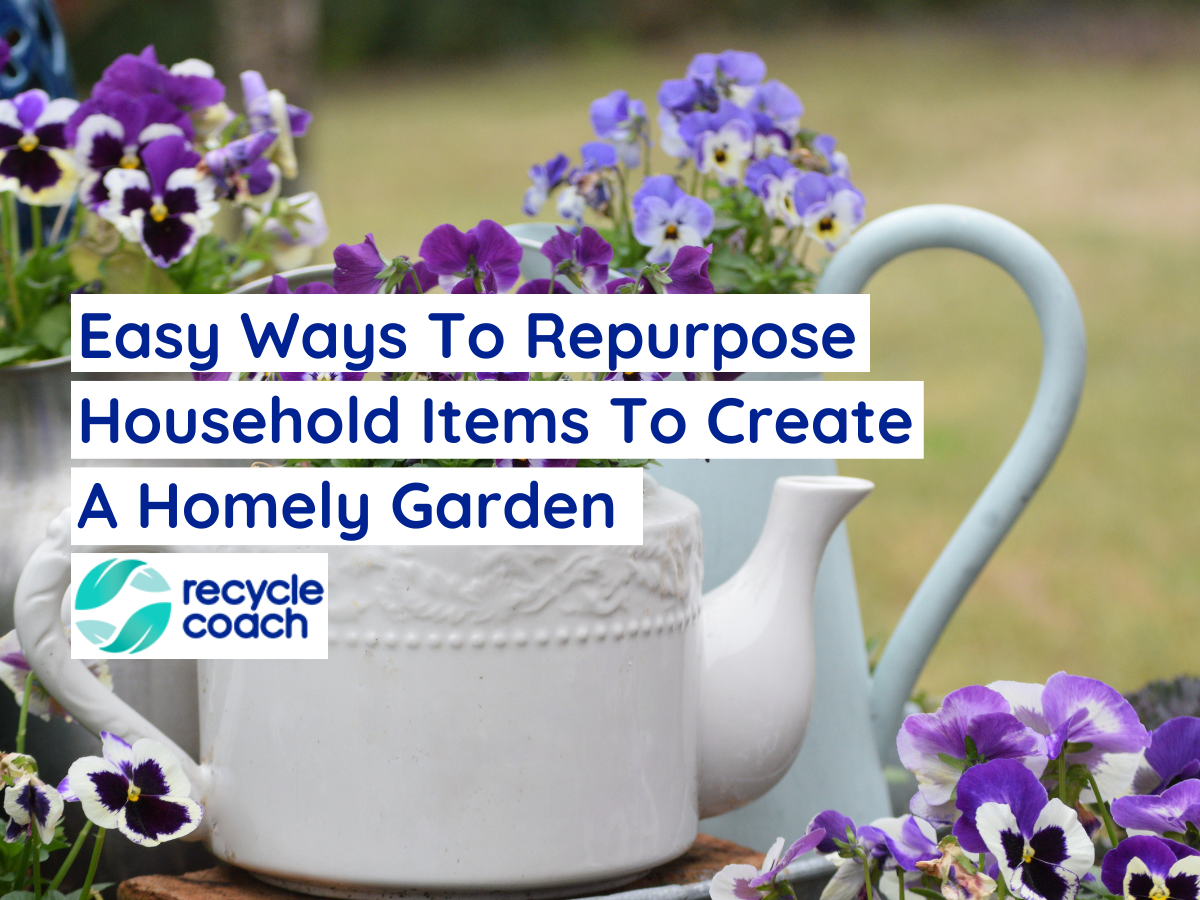
Every year, the world generates over two billion tonnes of municipal solid waste, with 33% of it not managed in an eco-friendly manner. It’s also worth noting that open dumping accounts for 31% of waste, and only 19% is recovered through recycling and composting, according to The World Bank. Recycling is a great way to reduce your carbon footprint, which translates to the conservation of natural resources, reduced greenhouse gas emissions, and low energy consumption.
There are many things you can do to recycle or reuse items to lower waste generation. And the garden is one place where recycling and repurposing old items can be done effectively. You can upcycle cans into planters, transform old furniture into storage space for garden produce, or recycle and reuse construction materials, like trees and brush to make compost or breakdown concrete to build pathways in the garden. Keep reading to learn easy ways to repurpose household items for a homely garden.
Turn Old Kitchen and Garage Items Into Planters
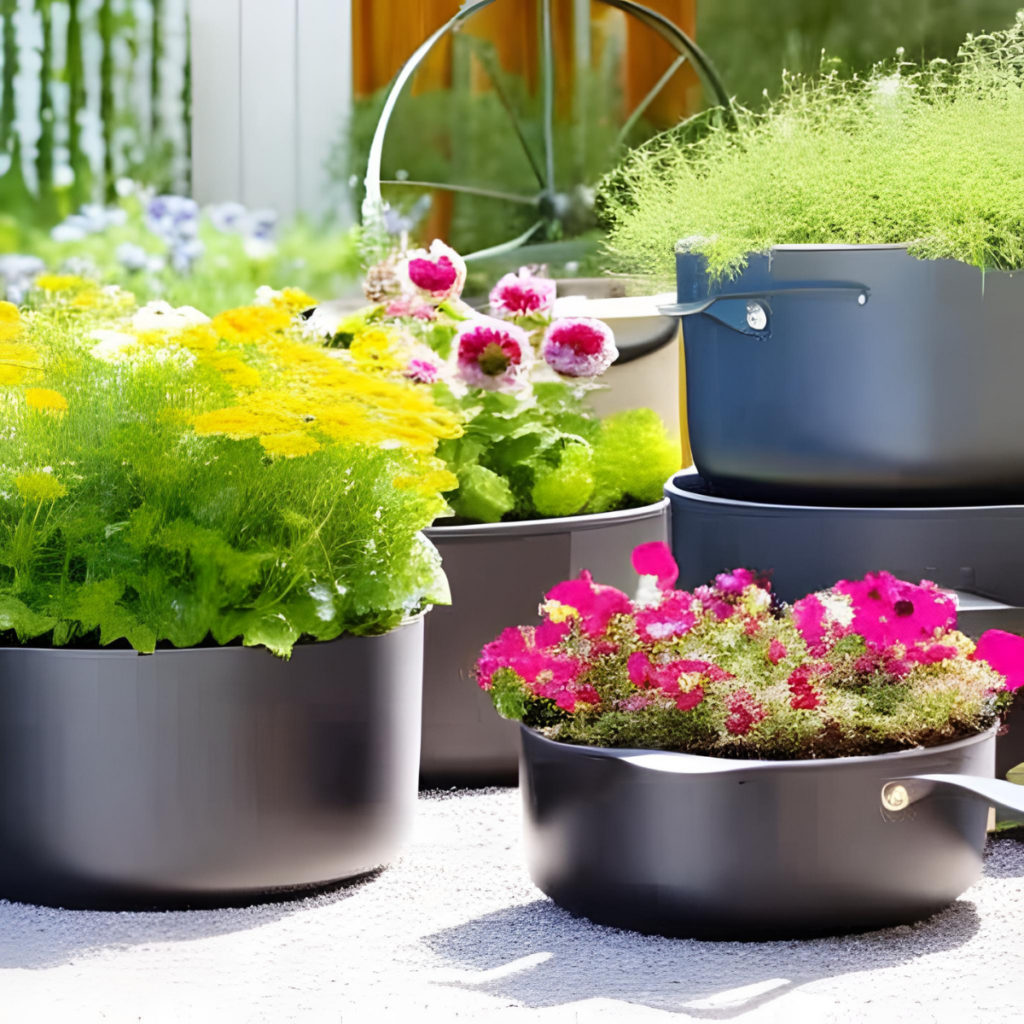
If you’re looking to turn your garden into an eco-friendly hub, planters are an excellent place to start. Instead of buying planters from the store, you could upcycle old kitchen items like old pots and pans. Grow flowers or herbs in kitchen pots you no longer use. To transform worn out pots into beautiful planters, paint them with the latest on-trend colors for outdoor spaces. You could also turn chipped teapots into ideal homes for potted shrubs or flowers, or create a hanging herb planter or strawberry garden using old colanders and kettles.
The garage is also a place where you can find suitable items to turn into planters. Old tires, cans, and plastic containers can be turned into beautiful planters for growing flowers and microgreens. Make sure to wash them thoroughly to ensure that they’re free of chemicals before using them in the garden.
Get Creative with Old Sinks and Tubs
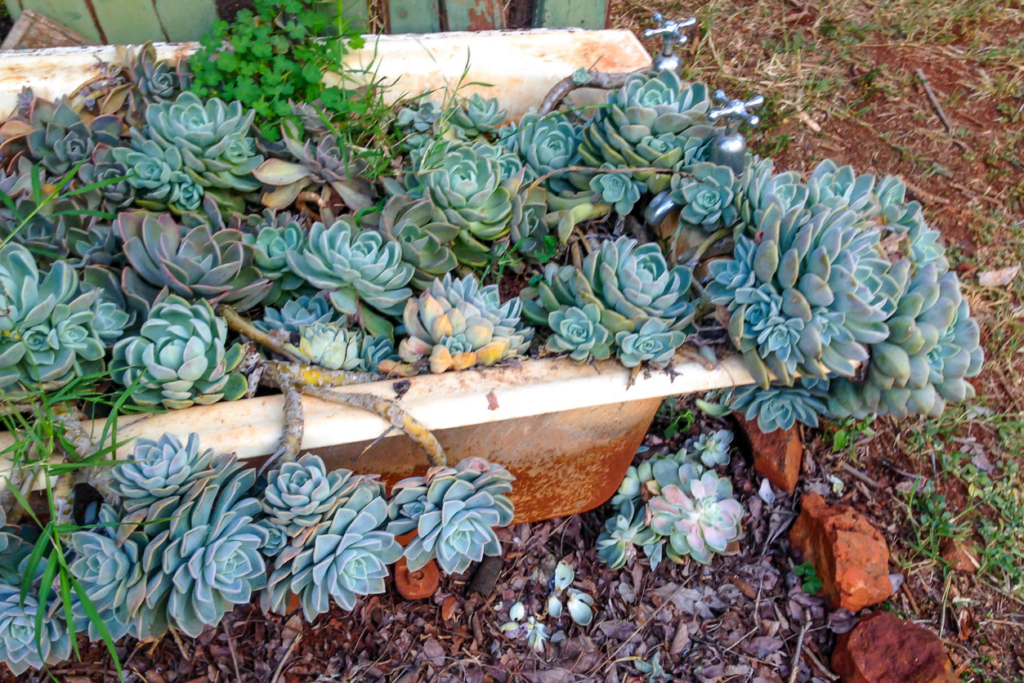
When it comes to upcycling projects in the garden, you can transform anything from the kitchen sink to bathtubs into beautiful planters. The beauty of repurposing ceramic and stainless steel sinks and tubs into planters is the even drainage they provide. All you need to do is place a few large stones at the bottom of the tub or sink to support proper drainage. Then, fill them with soil and compost and plant a variety of bedding plants to turn your garden into a colorful haven.
Besides serving as items for growing vegetables, herbs, and flowers, you can also turn tubs and sinks into ponds. You only need to sink tubs and sinks in the ground, then add clean water, and grow plants around the pond to create a rich ecosystem that attracts frogs, birds, and other wildlife in your garden. While the idea of adding a pond in the garden is to create a wild space, ensure it appears neat and welcoming.
You can achieve this goal by growing native plants and perennial grasses around the pond. In fact, planting native vegetation and perennials is one of the most inexpensive ways to maintain beautiful outdoor spaces. That’s because native plants and perennials require small amounts of water and zero chemicals to thrive. Also, incorporate hardscaping and xeriscaping to make your garden more environmentally friendly.
Recycle Empty Cartons, Toilet Rolls, and Coffee Cups
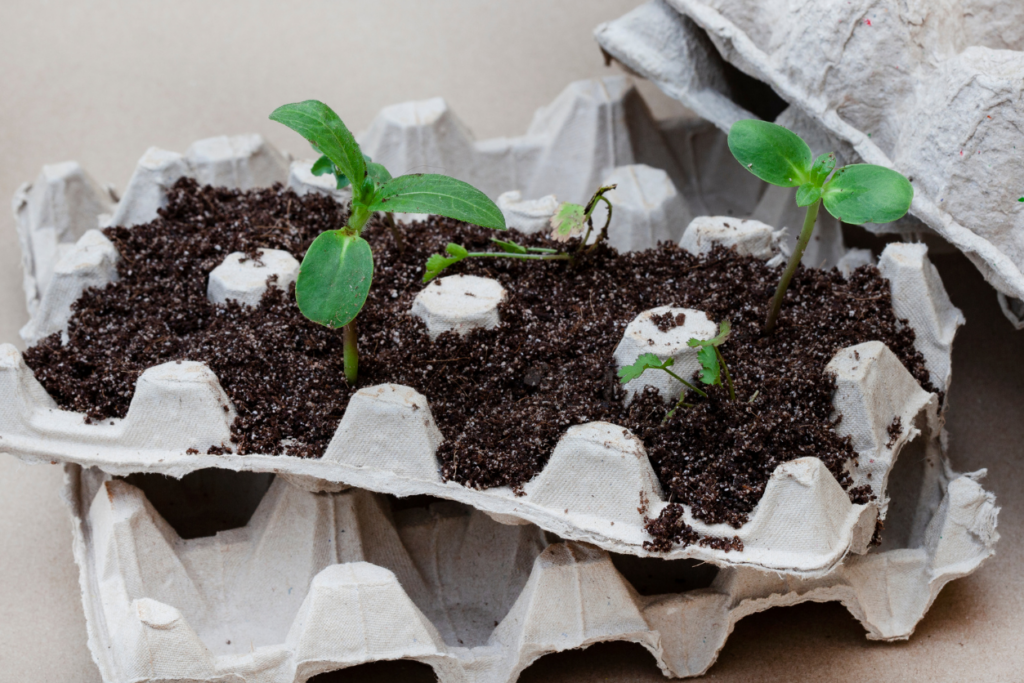
Another clever way of turning your garden into an eco-friendly space is through repurposing empty cartons, toilet paper rolls, and coffee cups into seedling nurseries. The key benefit of recycling empty egg or milk cartons or boxes, toilet paper rolls, and coffee cups is creating a plastic-free garden. That’s because, instead of buying seedlings in single-user plastic containers, you can easily sow seeds in these items. Once the seedlings are ready for transplant, you can recycle these common household items one more time before throwing them in the trash bin. This simple habit helps reduce household waste, resulting in fewer carbon emissions.
Use Kitchen Scraps to Make Compost
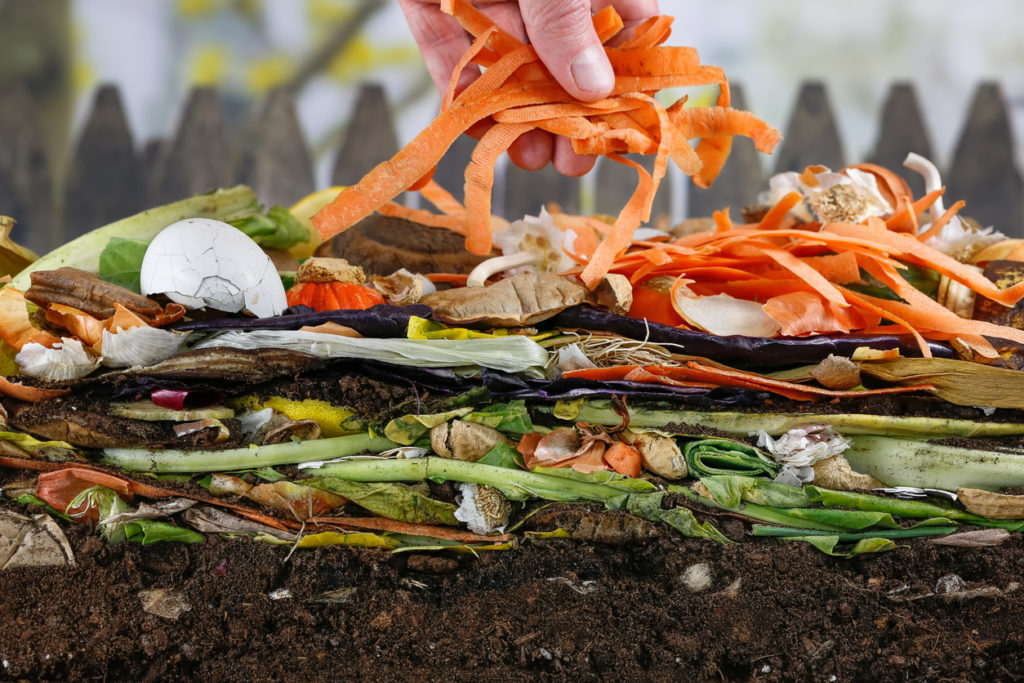
Many people assume disposing of food waste in landfills is a smart move, but it isn’t. Typically, food scraps, like kale stems, food leftovers, corn husks, banana peels, citrus rinds, onion and garlic peels, and carrot peelings take five days to a month to decompose and during that period, rotting food produces methane, which contributes to global warming. To help keep the environment clean and reverse climate change, it’s wise to compost food scraps and other compostables in your home, such as coffee filters, coffee grounds, loose tea leaves, shredded paper, and paper grocery bags.
Composting also allows you to recycle fallen leaves, wood shavings, shredded tree branches, straw or hay, hence making your yard waste greener. When making compost, you’ll need a compost bin or container, or dig a pit in one corner of your garden. Then, add green materials, such as green leaves, grass clippings, vegetable peelings, and other kitchen scraps. Your compost should also contain brown materials or elements high in carbon. Brown materials can be anything from corn stalks, twigs, sawdust, and paper. Next, add water and turn the pile every two to four weeks, until all the materials decompose. Once the compost is ready, you can use it as fertilizer or mulch.
Repurpose Old Cupboards or Dressing Tables
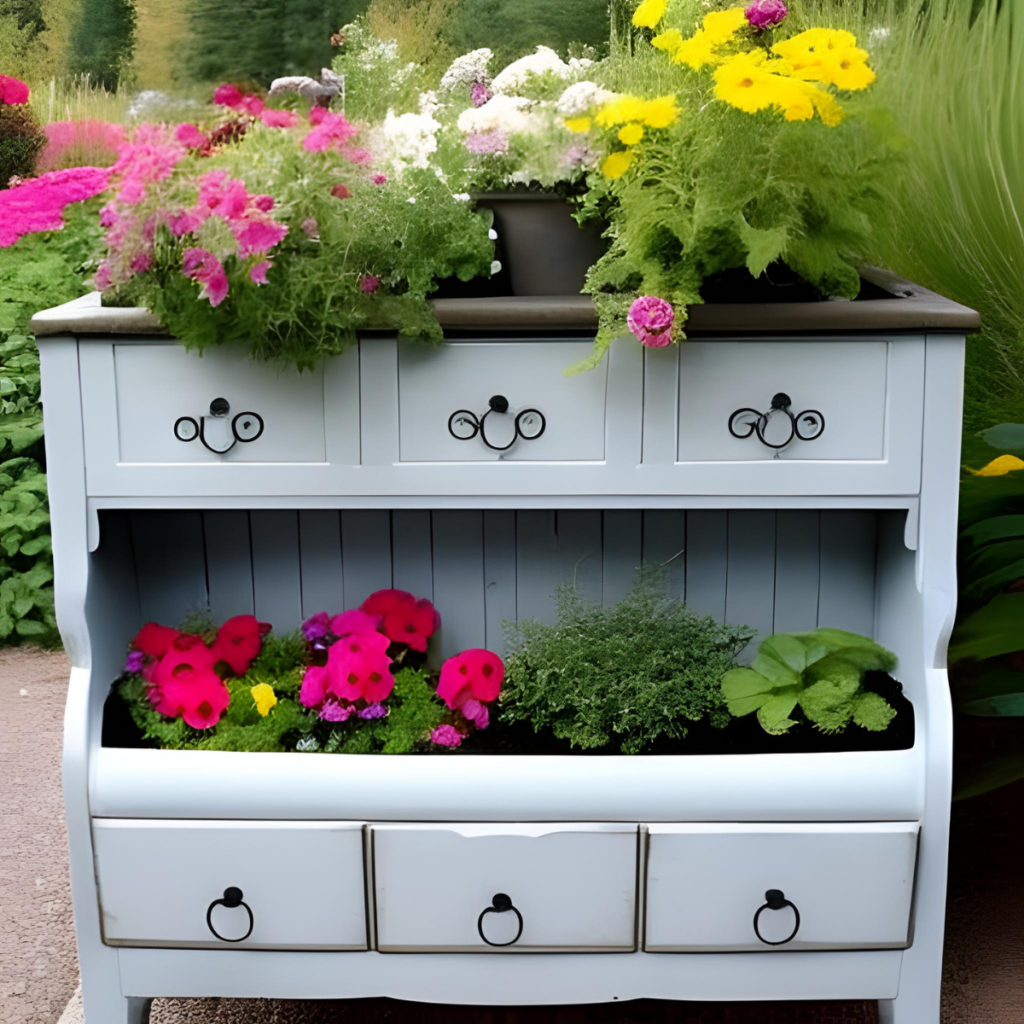
Having old furniture out in the garden adds character to your entire outdoor space. For example, you can upcycle an old dressing table with a fresh coat of paint and place potted plants in the drawers. While removing the mirror on the dressing table sounds ideal, it may be better not to do so. The mirror acts as a decorative element that adds a touch of luxury in your garden while creating an illusion of a large space.
An old cupboard or bookshelf is also ideal for various garden projects. You can transform an old cabinet or bookshelf into a unique planter. The natural shape of bookshelves allows you to transform the shelving into a plant container holder or garden bar. Instead of throwing away unwanted cupboards, repurpose them to create beautiful potting tables for a variety of edible plants and flowers. You can add hooks on the side to hang tools for easy access.
If you’ve been looking for ways to make your garden eco-friendly, start by recycling household items. Instead of throwing away old pots, teapots, and other kitchen items, repurpose them into planters. For example, you can plant herbs, strawberries, or veggies in teapots, colanders, and kitchen pots. Convert old bookshelves, cupboards, and dressing tables to planters, plant container holders, or storage space for gardening tools. Kitchen sinks and bathtubs are perfect for growing vegetation and creating a stunning wildlife pond.
Author Bio
Jackie Edwards used to work in real estate, but left the business when she became a mom. She’s now a writer, but also an at-home eco-warrior, aiming to make her family and home life as sustainable as possible from growing veggies, to buying/making eco-friendly beauty products. Whilst not there just yet a big challenge for the year ahead is to try and go as plastic free as possible too.